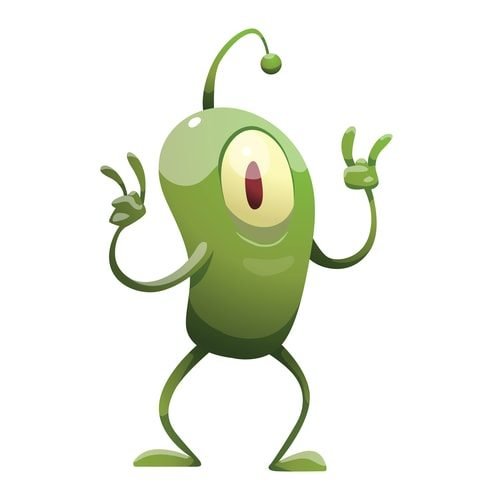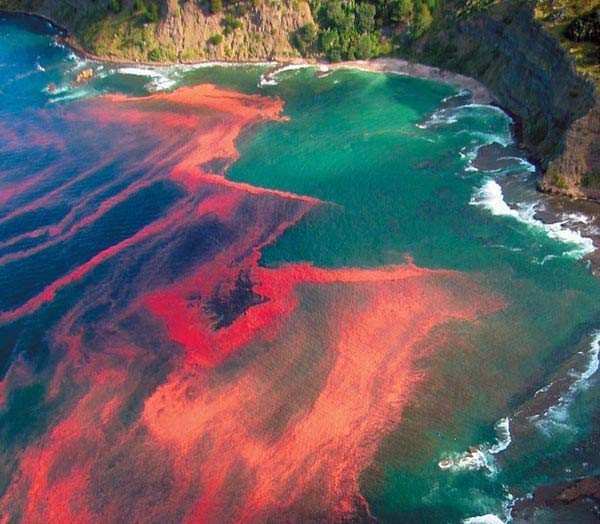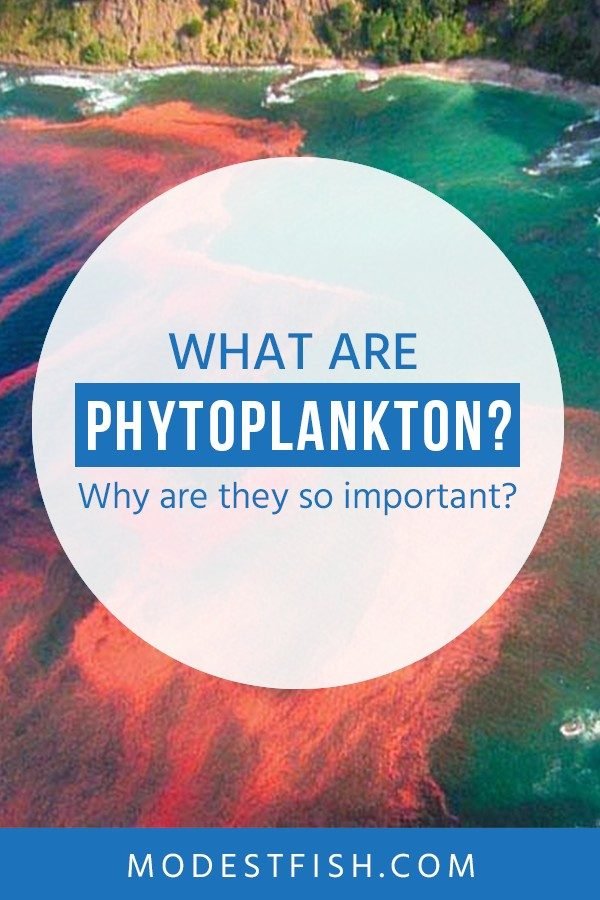Phytoplankton, they’re more important than you may know. Yes, that tiny organism could be considered one of the main foundations of our ecosystem.
In this article, we’re going to discuss what they are and why they’re so important.
Let’s get started.
What are Phytoplankton?

Phytoplankton is a blanket term that refers to more than 5,000 different species of microorganisms that live in the ocean or in freshwaters. Phytoplankton use the sun to produce energy, which makes them like the plants of the sea.
Ecology
Phytoplankton species can have a lot of important ecological differences that determine where one species dominates over another, but they all have a few things in common.
The first, and most important, is that they get their energy from the sun using photosynthesis – similar to how land plants produce energy from the sun.
In the process, phytoplankton are net producers of oxygen and help to add dissolved oxygen to the ocean that bacteria, other plankton, and fish and larger organisms need to breathe.
The other important thing that phytoplankton need to grow is nutrients, like nitrogen, phosphorous, silica, and iron.
Because phytoplankton are all competing with each other for nitrogen and phosphorous, many parts of the surface ocean are relatively low in nitrogen in particular, while there is an abundance of nitrogen below water depths where it is too dark for phytoplankton to conduct photosynthesis.
Some phytoplankton, known as diazotrophs, are able to convert nitrogen gas directly from the atmosphere into a form of nitrogen that they can use to grow.
Plankton vs. Phytoplankton: Are they the Same?
You may have also heard the term plankton thrown around to refer to microorganisms that float around the surface of the ocean.
Plankton is a broad term that refers to any of the tens of thousands of species of microorganisms floating around near the surface of the ocean, while phytoplankton refers specifically to the subset of plankton that conduct photosynthesis.
How do Zooplankton Fit into this?
If phytoplankton are the microscopic plants of the sea, zooplankton are the microscopic animals of the sea.
Zooplankton refers to thousands of different species of microorganisms that float around the surface ocean, but zooplankton get their energy by feeding on phytoplankton, other zooplankton, or bacteria instead of by photosynthesis.
What are the Major Types of Phytoplankton?
Phytoplankton can be divided into several major groups: cyanobacteria, diatoms, dinoflagellates, green algae, and coccolithophorids.

Cyanobacteria
Cyanobacteria are actually bacteria that are capable of photosynthesis, which means they are much smaller and far simpler – but also much more abundant – than any of the other types of phytoplankton.
Diatoms
a particularly interesting group of phytoplankton because they create silicate shells around themselves.
Diatoms can bloom in huge abundances when both nitrogen and silica are readily available because they tend to grow faster than most other types of phytoplankton.
This happens especially in places like the west coast of the US, where each summer a process known as upwelling brings nutrient-rich deep waters to the surface ocean – suddenly creating the perfect conditions for diatoms to explode in population.
Dinoflagellates
Can be quite large – up to two millimeters in size (so yeah, it’s relative). They are of particular interest to many humans because this is the group responsible for red tides, toxic blooms of dinoflagellates that can shut down beaches and poison shellfish and other marine creatures.
Green Algae
Is something of a catch-all group of phytoplankton that refers to the many species of photosynthetic microorganisms that don’t fall into the other major groups.
Coccolithophorids
Coccolithophorids (that was a mouthful) also produce shells, but these are made out of calcium carbonate – the same material that coral reefs and many cave systems are built out of.
Where do Phytoplankton Live?
Phytoplankton can live almost anywhere water is found, from the freshwater lakes and rivers to the ocean to hypersaline basins.
In the ocean, phytoplankton are largely restricted to the first several hundred feet of the water column because this is where sunlight is plentiful enough for photosynthesis.
You might think that phytoplankton are most abundant at the water’s surface, since there is the most light there. But in fact, they are often most abundant around 300 feet down – an area known as the deep chlorophyll maximum.
The reason for this is that deeper waters have more nutrients, and especially more nitrogen, so this depth represents the best trade-off for phytoplankton between having enough sunlight and having enough of the nutrients they need to grow.
Another surprising place where phytoplankton, and diatoms in particular, are found is reservoirs.
Often, reservoirs receive a huge amount of nitrogen and phosphorous runoff from fertilizer use in agricultural areas, which creates the perfect conditions for diatoms to bloom in the standing water behind a dam.
Why Phytoplankton are so Important

Phytoplankton aren’t just abundant in the ocean – they’re also critical to how the environment as we know if functions.
They’re the basis of the entire marine food chain, responsible for adding oxygen to the ocean, and play a key role in sucking carbon dioxide out of the atmosphere.
Plus, thanks to human impacts like fertilizer runoff, phytoplankton have shown up in places where they have had some not so desirable effects.
The Food Chain
Phytoplankton are, in many ways, the basis of the entire marine food chain.
Phytoplankton are responsible for bringing new energy into the ocean by converting sunlight into energy and using it to grow.
This is critical since all of the other organisms in the ocean are eating each other, essentially recycling the energy and carbon that phytoplankton have brought in from the sun.
Without phytoplankton bringing in new energy, the total amount of biological energy in the ocean would slowly decrease over time, collapsing entire marine populations along the way.
What Eats Phytoplankton?
Phytoplankton can serve the food chain in two ways.
First, they can be directly eaten, usually by slightly larger zooplankton – which in turn serve as food for even larger zooplankton and eventually fish. In fact, zooplankton grazing on phytoplankton is an extremely important population control.
When nutrients become abundant and a bloom occurs, phytoplankton populations could just keep growing until they run out of nutrients.
However, zooplankton typically bloom in the following days because suddenly there is a feast of phytoplankton available for them.
Thus, zooplankton typically eat enough phytoplankton to the point that their population is returned to pre-bloom numbers, and the zooplankton begin to die off as well as their feast is exhausted.
The second way that phytoplankton can contribute to the marine food chain is that they can die – either from growing old or from running out of nutrients and starving.
When this happens, they release all of the organic carbon and nutrients that their cells contained into the water, making it available for bacteria to munch on.
These bacteria then grow and are themselves eaten by zooplankton, which in turn provide a food source for small fish and other creatures low in the marine food chain. The recycling of phytoplankton by bacteria is known as the microbial loop.
Climate and the Carbon Cycle
During photosynthesis, phytoplankton aren’t just generating energy for themselves. They’re also fixing carbon dioxide from the atmosphere into usable, organic forms of carbon that then get incorporated into their cells.
The result, across an ocean-wide scale of phytoplankton fixing carbon dioxide, is that they have a huge impact on how carbon moves between the atmosphere and ocean.
Phytoplankton are one of the single largest removers of carbon from the atmosphere, sucking in about 92 gigatons of carbon every year – almost as much as all of the world’s land plants.

But the story behind what happens to that carbon once phytoplankton pull it into the ocean is more complicated than simple removal from the atmosphere.
The problem comes when phytoplankton die – they either become food for zooplankton, which breathe out carbon dioxide while they’re eating, or they release their carbon to be broken back down into carbon dioxide by bacteria.
This carbon dioxide is still dissolved in the ocean, which serves as something of a buffer to prevent it from being regurgitated to the atmosphere where it can contribute to climate change.
However, the ocean can only hold so much carbon dioxide before it either mixes it back into the atmosphere or begins to turn acidic.
On the other hand, not all of the carbon that phytoplankton take up from the atmosphere is returned to where it came from. Some phytoplankton cells can sink quickly to the bottom of the ocean and become buried in the seafloor without being broken down by bacteria.
When that happens, the carbon is effectively pulled out of the atmospheric carbon cycle and likely won’t contribute to climate change for at least the next several million years.
This is where diatoms and coccolithophorids are particularly important. Their shells make them harder for zooplankton to graze on and relatively heavy when they die, which means they can sink faster so that bacteria have less time to break them down.
In addition, the silica and calcium carbonate shells can also make it harder for bacteria to access the organic carbon inside the shells, increasing the chances that it will be buried rather than converted back to carbon dioxide.
Exactly how much organic carbon is buried versus converted back to carbon dioxide is a major question of scientific research, but a good estimate is that only two percent or less of phytoplankton carbon is buried without returning to the atmosphere.
Human Impact
In addition to supporting the marine food chain, which humans depend on for a large portion of our food, phytoplankton also have a more direct impact – they produce oxygen by photosynthesis.
Although a lot of the oxygen produced by phytoplankton starts in the ocean, it ultimately mixes into the atmosphere. Scientists estimate that fully half of the oxygen in our atmosphere comes from phytoplankton rather than land plants.
Although it is still early, phytoplankton also have potential applications as a source of biofuels. Numerous companies are working on finding ways to commercially produce phytoplankton so that humans can harness the sun’s energy to power our cars rather than use traditional fossil fuels like gasoline.
Do They Have any Negative Impact?
Phytoplankton can have negative impacts for both humans and the marine ecosystem. The most prominent negative impact is harmful algal blooms – blooms of toxic species of diatoms and dinoflagellates.
Some of the common species involved in harmful algal blooms are the diatom Pseudonitzschia, which produces a toxin known as domoic acid, and the dinoflagellates Alexandrium and Dinophysis – the former of which is known for producing so-called red tides.

The toxins produced by these specific types of phytoplankton can harm humans directly if they are ingested while swimming.
However, the more serious impacts occur when the toxins accumulate in filter-feeding shellfish, which can then be eaten by humans or other marine creatures and cause paralysis or death.
Harmful algal blooms are thought to be triggered by accumulations of nutrients, often due to fertilizer runoff into freshwater lakes or into the coastal ocean.
What Can I do to Help?
Dealing with climate change and fertilizer use are large-scale problems, but you can play a small role in helping phytoplankton.
Limit your carbon footprint by reducing the amount you drive or fly, or by switching your home over to a renewable energy source.
You can also get involved with partnership organizations that are working to limit how much fertilizer runoff is allowed into the US’s large estuaries.
Conclusion
Phytoplankton are thousands of species of microscopic organisms living in the surface ocean, lakes, and rivers that convert the sun’s rays to energy and fix carbon dioxide from the atmosphere.
Despite their small size, phytoplankton are essential to the environment as we know it because they are responsible for moderating how carbon moves between the ocean and atmosphere, serve as the base of the marine food chain, and produce half of the world’s oxygen.
Share on your Pinterest!

